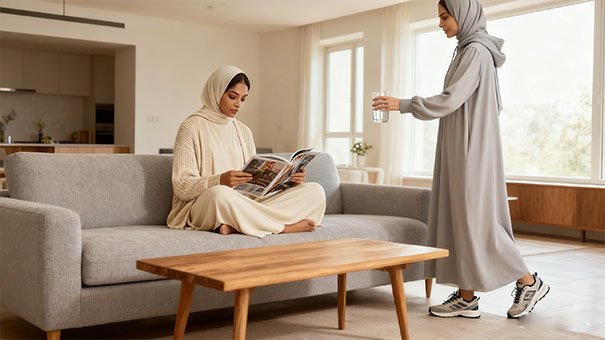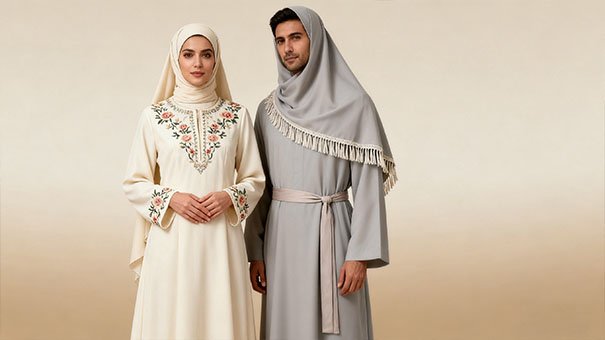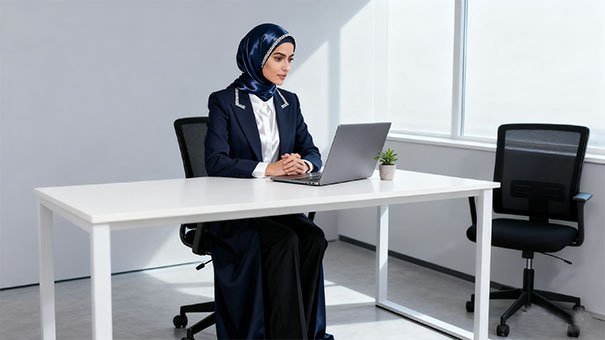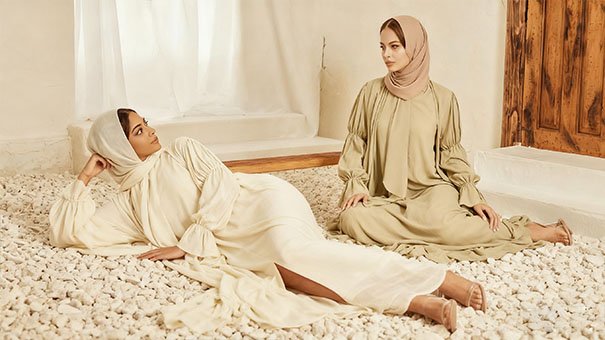Quality isn’t optional. It’s your brand’s promise. In Abaya manufacturing, quality control means consistent fit, durable stitching, and beautiful finishes — every time. Below we walk through our production steps, inspection checkpoints, and why hand-crafted embroidery and strict testing set premium Abayas apart.
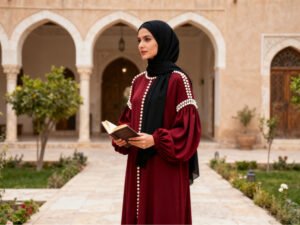
1. Why Quality Matters in Abaya Manufacturing
A premium Abaya is more than fabric and thread. It’s a promise of fit, finish, and longevity. Customers expect consistent sizing, colorfast materials, and neat trims. When you deliver that, you build trust. When you miss it, you risk returns and lost reputation. Simple as that.
Quality also protects margins. Fewer defects mean fewer reworks and lower cost per unit. So quality control isn’t a cost — it’s an investment.
2. Our Full Production Steps (From Fabric to Finish)
We follow a structured flow. Each stage has clear owners and measurable outputs. Below is our standard workflow — the backbone of our Abaya production steps.
- Fabric Sourcing: We source fabrics from audited mills. We check composition, GSM, and color lot samples before ordering.
- Pre-Production Sampling: Tech pack → prototype → fit sample. Clients approve fit and trims before bulk starts.
- Marker & Cutting: We use precision markers and CNC cutting for consistent panels and minimal waste.
- Stitching & Assembly: Skilled operators follow SOPs. Key seams use reinforced stitching for durability.
- Hand Embroidery & Finishing: Our in-house artisans handle full-hand embroidery and delicate trims. Each motif is reviewed for evenness and thread security.
- Inline Inspection: QC staff check garments during production to catch issues early.
- Final Inspection & Packing: A final AQL inspection, labeling, and careful packaging complete the process.
Want a closer look at our craftsmanship? Learn about our custom printing and embroidery capabilities and how handwork elevates each piece.
3. Quality Control Checkpoints: Where We Inspect and Why
We use a layered QC approach. In practice this means multiple checkpoints. Each checkpoint has clear pass/fail criteria.
- Incoming QC (IQC): Fabric shade, shrinkage test, and material certification review.
- Line QC: Stitching, seam allowance, and dimensional checks during production.
- Mid-Bulk Audit: Random sample audit after 30–50% completion to detect trends.
- Final QC (FQC): AQL-based inspection (critical, major, minor defects) before packing.
- Pre-Shipment Check: Carton integrity, labeling accuracy, and accessory verification.
We document every inspection. Reports include photos, defect categories, and corrective actions. That transparency helps buyers track quality in real time.
For brands that require extra assurance, we support third-party lab testing for colorfastness, fiber content, and durability. See expert standards at ISO 9001 and textile testing resources at OEKO-TEX.
4. Testing & Certifications We Use
Certifications matter. They prove compliance and build buyer confidence. We work with accredited labs and follow recognized standards.
- ISO 9001: Quality management systems and continual improvement.
- OEKO-TEX: Textile safety and harmful-substance testing.
- Third-Party Lab Tests: Colorfastness (ISO 105), wash durability, and seam strength tests.
If you want independent verification, we can arrange SGS or Bureau Veritas inspections. These third-party checks are standard for premium brands. Learn more about industry testing via SGS.
5. How to Work With Us (Smooth Onboarding & Clear KPIs)
We make collaboration simple. Here’s how:
- Brief & Tech Pack: You share designs and specs. We review and advise on fabric and trims.
- Sample & Fit Sign-off: We produce a pre-production sample for your approval.
- Pilot Run: Small batch to confirm processes and lead times.
- Full Production: We set quality KPIs, check points, and reporting cadence.
- Logistics & Aftercare: We handle packing, shipping, and post-shipment support.
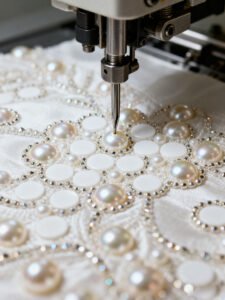
For detailed services like embroidery, printing, and special trims, see our portfolio: custom printing and embroidery. We use artisans and machine work where appropriate to balance cost and quality.
Ready for production that respects craft and quality?
Partner with Oharry Garment for meticulous QC, full-hand embroidery, and traceable fabrics. We deliver consistency at scale.
6. FAQs
Q1: What AQL level do you use for final inspection?
We typically apply AQL 2.5 for major defects and AQL 4.0 for minor defects. For premium orders, we can tighten AQL to 1.5 on request.
Q2: Do you offer full-hand embroidery?
Yes. Our in-house artisans perform full-hand embroidery. Each motif undergoes quality checks for stitch security and visual uniformity.
Q3: Can you provide third-party inspection reports?
Absolutely. We coordinate SGS or Bureau Veritas inspections and provide lab testing certificates on request.
7. Summary
Quality in Abaya manufacturing is systematic. It starts at sourcing and ends at the final carton — with checks at every step. We combine skilled artisans, clear SOPs, and accredited testing to ensure each Abaya meets your standards. If control and craft matter to your brand, start with a manufacturer who documents every step and publishes inspection results.

